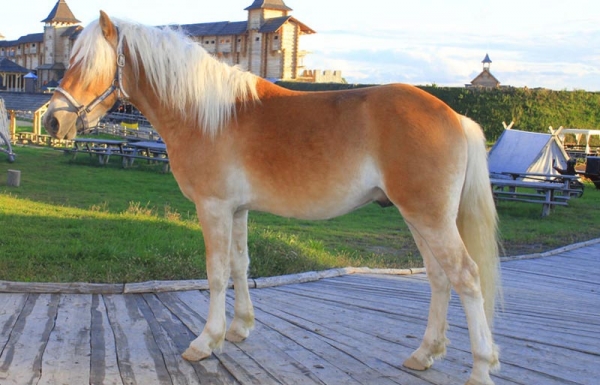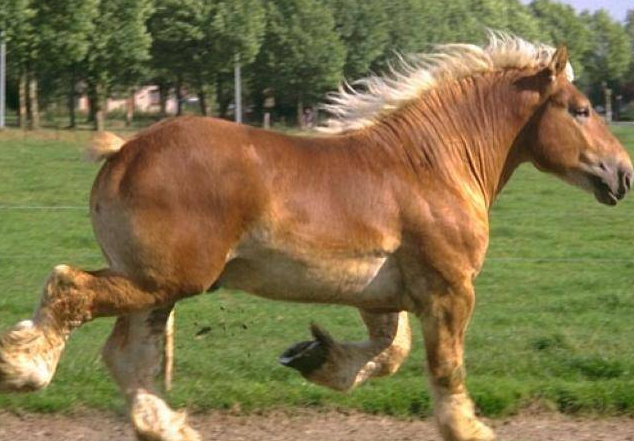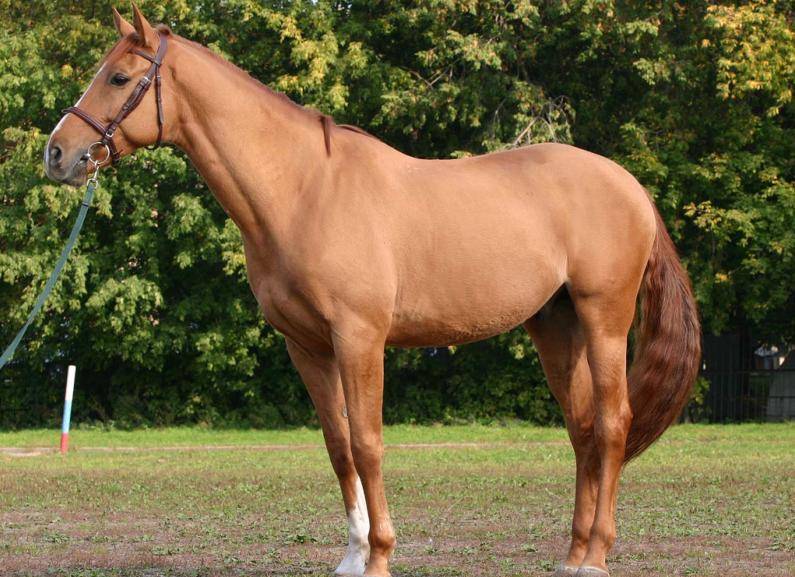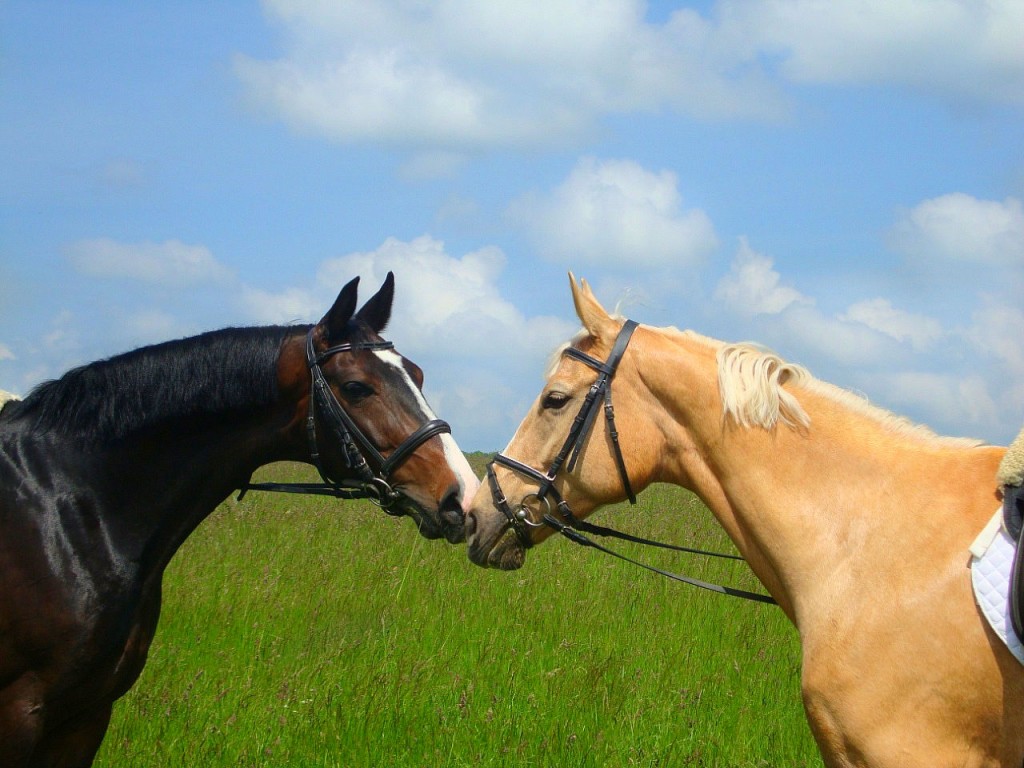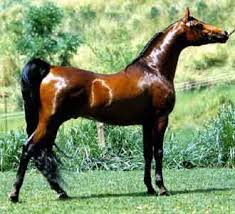Hannover horse
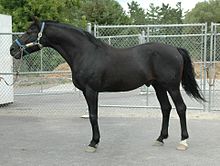 About the breed
About the breed
Nowadays, the Hanover half-breed is the most popular sports breed in the world. She can be seen at most international show jumping and dressage competitions. This is the result of German scrupulousness: the Hanover breed was carefully created for about 300 years – for various, but specific purposes. This breed was bred from an ugly livestock, improved by crossing with suitable thoroughbred riding, Arab and Trakenen horses.
Breed characteristics
Hanoverian horses have an almost perfect exterior, in which the traits of the English thoroughbred are clearly traced. Head of medium size, with a straight profile; look alive.
The neck is long and muscular, with a graceful curve. The chest is well-formed, the shoulder is long and sloping. The chest is deep. The back is medium length, the lower back is muscular, and the hips are powerful. Legs are strong, with large joints. Hooves of the correct form. The body of the Hanoverian horse should fit in a rectangle, but not in a square. The suit is bay, red, black, occasionally gray and karakova. Height at the withers 154-168 cm.
Hanoverians are impressive and noble, have excellent free movements, which allows them to achieve great success in dressage. Hanoverians are also ideal horses for show jumping. Due to their considerable growth, they manage to take rather large barriers.
Origin
The birthplace of the Hanover breed is the Elector of Hanover in Germany. The breed has spread throughout Westphalia. Stud farms are located in Celle in Lower Saxony. Hanover breed is bred in North and South America, Australia, Belarus (Polochany).
Story
The Hanover breed has a long history, it was first mentioned in the VIII century, when it was used at the Battle of Poitiers, in which Karl Martell defeated the Saracens. Hannover horses at that time were heavy war horses, possibly a product of crossbreeding of local breeds with Spanish and Oriental horses.
The breed owed its development to military conflicts, and in the Middle Ages it turned into a large horse in the type of cob, capable of carrying a knight with his armor. This type of horse has been in demand for centuries, but changes in military tactics have required lighter horses. At this time, the Hanoverian horses were still heavy, although they became taller and more mobile than koby; in the XVII century there were three characteristic types of horses bred for military purposes: Hanover, Mecklenburg and Danish. But only in the 18th century did the breed gain its face when George I ascended the British throne at home in Hanover in 1714. He spent most of his rule in Hanover; the next hundred years of Hanoverian horses improved. Thoroughbred riding stallions were crossed with Hanoverian mares; Cleveland bay males were also used, which made it possible to obtain rather heavy horses used in agricultural work.
George I founded the state stud farm in Celle in 1735. 14 stallions with Spanish blood were introduced. By 1750, the number of stallions increased to 50 Holstein, East Prussian, Danish, Andalusian and Neapolitan descent. And by 1800 there were already 100 of them. Large universal riding and carriage horses, as well as horses for agriculture, were bred at the plant. The improvement of the Hanover breed continued with the infusion of Trakenensky and purebred horse blood. In 1888, the pedigree book of the Hanover breed was founded. The result of the work was a wonderful sports horse, as we know today the Hanoverian breed. She is the most famous of all half-breed breeds.
Currently, the breed is being monitored by a society of Hanover breed breeders. About 150-160 stallions are kept in the Celle stud farm, where they pass a test of endurance, performance for several months, their character and exterior are checked. Only after successfully passing the tests are the stallions allowed for breeding.
The Hanoverian breed played an important role in the formation and improvement of other half-breeds, in particular, the Westphalian, Mecklenburg and Brandenburg breeds.
Zernebog, founder of the F and W lines in the Hanover breed (born 1845)
Jellachich, manufacturer of the factory in Celle (born 1844)
Hanover breed in Russia
In Russia, Hanoverian horses began to be bred in the 60s of the XX century. In the stables of the former East Prussian stud farm Georgenburg, the Kaliningrad Stud Farm (now called Georgenburg) was organized. In Germany, stallions Duo, Valerik, Faust and Gunter and 66 mares were bought. These horses were quite massive and bony, therefore, to facilitate the type, as well as expand the genetic diversity, thoroughbred riding, traken and Arab stallions were used. In the late 90s, interest in German breeding horses increased. But to buy a purebred Hanoverian stallion without impurities of other half-breeds is quite difficult.
